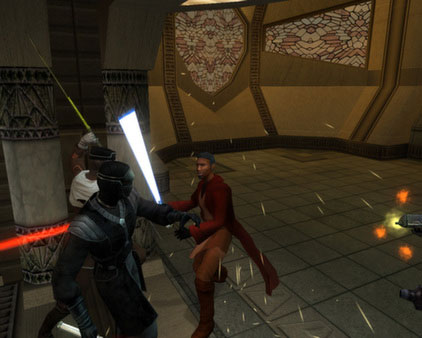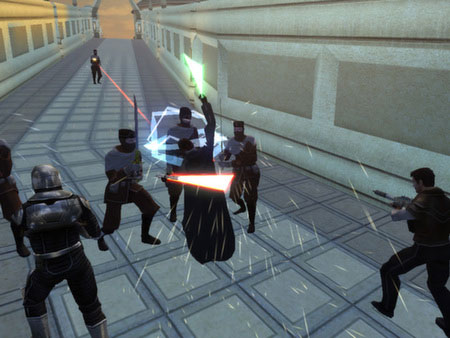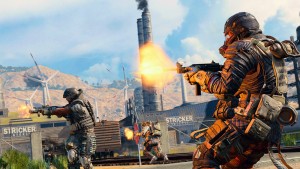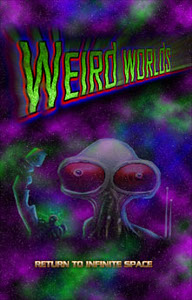KotOR2 recently became available on Steam. This playthrough was probably with The Sith Lords Restored Content Mod 1.8, which fixes many bugs/errors and restores content that was not completed in time for the release version. At the time of play it was unclear if the Steam version of the game and the mod got along. Viewing their list of restored content suggests it was probably successfully installed.
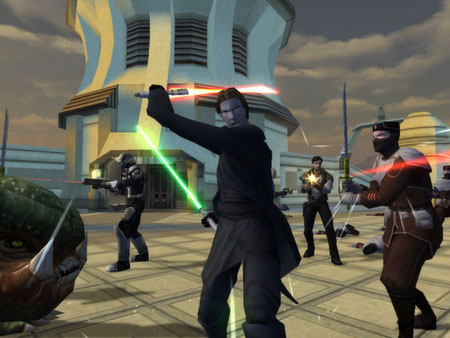 What I kept hearing about KotOR2 was that the game wasn’t as morally black and white as other Star Wars games. After playing the game, I can say that this is true… from a certain point of view. Despite its reputation and efforts, there’s never really any sense of moral ambiguity. There is only one notable instance of moral ambiguity: a beggar on the crime ridden moon Nar Shadda. If you give him credits, your mentor character shows him being beaten up and killed for them. The scene is so ham-fisted in its attempt at being morally ambiguous it’s almost funny.
What I kept hearing about KotOR2 was that the game wasn’t as morally black and white as other Star Wars games. After playing the game, I can say that this is true… from a certain point of view. Despite its reputation and efforts, there’s never really any sense of moral ambiguity. There is only one notable instance of moral ambiguity: a beggar on the crime ridden moon Nar Shadda. If you give him credits, your mentor character shows him being beaten up and killed for them. The scene is so ham-fisted in its attempt at being morally ambiguous it’s almost funny.
Perhaps the best example of the failed promise of moral ambiguity comes early in the game, on a planet being terraformed. The Ithorians currently tasked with making the planet habitable claim to be sabotaged by the Czerka Corporation, who want the contract for themselves. Czerka are clearly amoral, interested in only money. The Ithorians claim that Czerka suck at terraforming; everywhere Czerka has taken control of the process has resulted in the ecosphere falling apart. In most games, the Ithorians would be unambiguously good.
But there’s a twist; Czerka claims that the Ithorians are the incompetent ones. The Ithorians have imported alien species at great expense from distant worlds, instead of using local species, a far more efficient approach. If the Ithorians are in control, the terraforming process will take forever and the expenses will cripple the already wounded Republic. There’s more at stake than just one world; if this works, the Republic can use it as a template for the recovery of all the many other worlds devastated by war with the Sith. If it fails, those worlds will continue to wither and die. Not so clear who you should support now, is it?
Alas, it’s not as interesting as that. In the end it turns out that the Ithorians are right. Helping them results in the planet being healed on schedule, and helping Czerka results in dark-side style failure. Not exactly the moral ambiguity I was hoping for.
The whole problem is further compounded with the dialog options the player is presented with. Throughout the game and its predecessor, we meet characters who are neither Jedi nor Sith. A lot of the ideas in the game hinge upon both the Jedi and Sith philosophies being wrong. Yet as a player you can’t argue for this path. In fact, you’re actively punished for taking it. This could be a way of pointing out how difficult the middle path is, but I doubt it. I would buy it if there was even one point in the game where I could point out that both the Jedi and the Sith were jerks. There isn’t. You can only enthusiastically support one or the other. You can’t even take the path of “not being an asshole” without going on about how the Jedi are the greatest guys ever. This gets very annoying.
The villains are very effective and compelling. In the beginning. In the late game, when you actually start interacting with them, they are much less so. This seems to be a symptom of the game’s rushed development (more on that later). The first villain we’re introduced to is Darth Sion, a (literally) shattered and broken man who is basically undead. He shows up with his invisible buddies on a filthy, poorly lit Republic ship full of bloodstains and corpses. They faked a distress call to sneak aboard the Republic ship while invisible (Sion pretends to be a corpse). It’s somewhat confusing as to why this works; stealth field generators were dirt cheap and plentiful in the last war, and were used en masse in the war before that. Why such a significant technological ability would be forgotten after several hundred years of constant use is unclear. When you finally fight and kill Scion, he reveals that he;s the kind of idiot who’s never thought anything through in his entire life.
Darth Nihlus is next. Nihlus is this creepy… thing in a humanoid costume that makes a horrible,
empty, scratching sound when it speaks. We learn little about it, but what little we learn is enough to take the horror away. When you fight it, the existential abomination symbolizing hideous nothingness leaves a normal human corpse. You can take his mask if you want; one of your companions wants to see what his face looks like. You can take a look too. You don’t actually see it, but the mere fact that Nihlus has a face takes away a lot of the mystery. He goes from an unstoppable elemental force masquerading as human to some nihilist jerk with weird powers. He is also pretty stupid; he forgets that ships (like the one he’s on) can be destroyed with anti-ship weapons.
The last Sith lord you meet (who is also the first person you meet and the last thing in the game you fight) is Darth Traya, who betrays you. The betrayal is somewhat mitigated by the fact the game spends the entire game communicating that Traya will betray you. The fact that Traya is not to be trusted is obvious from the moment you meet her, unless you happen to trust the kind of person who would break into your house, hold you hostage at gunpoint and claim ignorance as to what is happening. Traya has a strange, poorly communicated and confusing philosophy. The core beliefs appear to be: adversity is necessary for strength/growth, the force is bad and a third one that clearly exists that I can’t figure out. The first belief is reasonable, but Traya takes it way to far. Her take on it is closer to “If I don’t kill you, you won’t learn anything”. Given that being killed is generally not a thing one can personally learn from, why she has this view is a little confusing. Hell, the one person who could potentially learn from this method (Darth Sion), doesn’t. After taking the same lesson several times. Sion is an idiot.
One of the complaints about KotOR1 was that the Jedi classes eventually outstripped the others in combat effectiveness so much you never used anything but Jedi. I was lead to believe that KotOR2 solved this by making the non-Jedi classes valuable in some way. It doesn’t. Not really. The way the game solves the issue of Jedi martial superiority is by making it possible for nearly every non-droid character to become a Jedi. I suppose that is a solution to the problem. It’s not the one I was told they took though. I was told they made every party member valuable by having situations where Jedi simply couldn’t have the skills necessary to succeed. Sections where you use non-Jedi party members, to highlight the awesome things they bring to the table.
And, well, they do have those. And they are easily the worst parts of the game. These sections involve being given control of a single party member who is wholly unsuited to solo combat and being forced to kill dozens of foes in succession. The point at which I gave up on the actual gameplay of the game was when I was introduced to an entirely new character, a ranged support type, and forced to fight nothing but melee characters. First a Wookiee, than a half a dozen dog things, then a complex full of trained melee soldiers. Combat became so boring and unfair I started editing my save file to give her godlike stats. Once I did that, I realized how much I hated the combat in general, so I hacked nearly everyone’s stats to get combat over with as soon as possible.
That’s not the only instance of this, of course. There’s also the time when you are tasked with using a low-HP ranged support character to fight off a pair of high-DPS assassin/mercenary type who spawn within melee range. Perhaps the biggest disappointment was HK-47’s mission, where you infiltrate a factory full of HK-50s. Fighting trios of enemies who are individually more powerful than you is not fun. Especially when you realize it is mathematically impossible to win.
On the subject of combat, it uses the same system as KotOR1. This means it has all the same issues as that game. Some of the annoyances have been fixed, but these mostly fall into things around the combat system rather than the combat system itself. If you liked the combat in KotOR1, you’ll love it here, but if you didn’t like it there, you’ll find KotOR2 no more enjoyable.
The ending is where the game begins to completely fall apart. In the final mission sequence it becomes painfully obvious the developers ran out of time. You crash on a planet that everyone has ties to; the plot, at least, remains intact. You then proceed to kill a large number of identical monsters before fighting a bigger version of the monsters. Then you fight dozens and dozens of Sith in blank,
featureless corridors. There is a boss fight. And another boss fight. Then the final boss tells you how the game ends: what the consequences of your actions were, the fates of various NPCs and so on. And finally there is a horribly tonally inappropriate, vaguely comedic scene. And then the planet blows up.
Bloody hell these guys needed more time to make this game.
Despite the fact that I just spent this entire article complaining, I have to recommend the game. It has its flaws (oh my god does it have its flaws), but the game is gripping and significantly more intelligent than the vast majority of other works in the Star Wars universe. The fact that I spent so much time arguing with the philosophies of various characters is arguably a good thing; it prompted a response. The fact that I had no real way of communicating my response back to the game was a problem, but as a work of art it succeeds.
Information on tweaking KotOR2 for modern systems can be found on PCGamingWiki.

